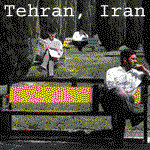Pentagon to alert 8 Guard units for duty
 U.S. soldiers of 45th Infantry Brigade from Oklahoma Army National Guard are on foot on the outskirts of Kabul, Afghanistan, in this 2003 file photo. The Pentagon is preparing to alert eight National Guard units that they should be ready to go to Iraq or Afghanistan beginning late next summer, The Associated Press learned Wednesday. (AP Photo/Aijaz Rahi, FILE)
U.S. soldiers of 45th Infantry Brigade from Oklahoma Army National Guard are on foot on the outskirts of Kabul, Afghanistan, in this 2003 file photo. The Pentagon is preparing to alert eight National Guard units that they should be ready to go to Iraq or Afghanistan beginning late next summer, The Associated Press learned Wednesday. (AP Photo/Aijaz Rahi, FILE)By LOLITA C. BALDOR
WASHINGTON -The Pentagon is preparing to alert eight National Guard units that they should be ready to go to Iraq or Afghanistan beginning late next summer, The Associated Press learned Wednesday.
The U.S. military is reaching out to more Guard units in an effort to maintain needed troop levels, ease some of the strain on the active duty Army and provide security for ports, convoys and other installations.
According to defense officials, seven of the units would deploy to Iraq and one to Afghanistan. The officials spoke on condition of anonymity because the orders had not yet been signed and the announcement is not expected until the end of this week.
Two of the units will be full combat brigades heading to Iraq — between next summer and into 2009, to serve as part of the rotation with active duty troops. There are currently 20 combat brigades in Iraq, but under plans mapped out by President Bush and his top commanders, that number will gradually drop to 15 next year, as the U.S. reduces its troop presence there.
Those two Guard brigades would include about 3,500 soldiers each — generally the size of a combat brigade. But the other five going to Iraq will be much smaller brigades that are tailored for specialized support operations, mostly security and detainee operations. Their sizes vary, but some would be about 1,000 troops.
The announcement sometime this week will give the Guard units advanced notice of the planned deployment schedule so that they can begin training and preparing. Also, because it looks far into the future, there is always the possibility that plans could change, based on conditions in Iraq.
There are now 171,000 U.S. troops in Iraq, largely because several units are overlapping as some move in and others move out of the country. Once those transitions are complete and the drawdown begins, the level of troops in Iraq could drop to as low as 135,000.
Some of the smaller Guard units would be stationed in Kuwait, where they would provide security for the port there, as well as convoys that move in and out of Iraq.
All together, the Guard announcement would involve about 20,000 soldiers.
Specific brigades were not identified, but they will include units from North Carolina, Oklahoma, Illinois and Hawaii, according to officials. Some of those being alerted this week have done tours in the war zone already, and others would be going for the first time.
A key element of the plan calls for sending the Guard brigades in fully intact units, complete with their own commanders and headquarters, rather than breaking them up and spreading them around, as has been done in Iraq in previous Guard deployments. Lt. Gen. H. Steven Blum, chief of the National Guard, has made that a priority, saying his brigades are more effective working as teams.
At the same time, the plan will also allow the citizen soldiers to serve just eight or nine months on the battlefield, as part of a 12-month deployment. Defense Secretary Robert Gates has committed to having Guard soldiers serve in war zones for no more than one year, including the final training time before they leave.
Previously, Guard soldiers would spend up to six months training before going overseas for 12 months — forcing them to be away from home for as long as 18 months. More recently, brigades in Iraq — including some Guard units — saw their deployments extended to up to 15 months on the battlefield.
The new plan would have them spend several months at home training, then the remainder of the year at the battlefront.
As of this summer, more than 185,000 Guard members had served in either Iraq or Afghanistan over the past six years and more than 28,000 of them had been deployed more than once.
___
On the Net:
Defense Department: http://www./defenselink.mil
Labels: Afghanistan, Iraq, United States, War














0 Comments:
Post a Comment
<< Home